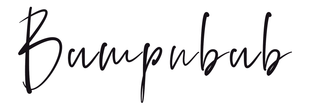Tips for pumping!
Education in the antenatal period about the potential need to express breastmilk and pump is always suggested, so you have the knowledge about expressing before bub is born. Some mums will need or choose to pump from the get-go, while others may never express during their entire feeding journey. It’s not always necessary to buy a pump; you can also hire one.
Here are some tips for pumping should you need them:
Breasts and nipples come in all shapes and sizes, and it is important to buy equipment that is appropriate for your nipple size. If the flange (plastic piece around your areola) is too small, then it will rub on your nipple and cause pain and damage. On the opposite side, if the flange is too big and there is a large gap between your nipple and the flange, then breastmilk will not be drained effectively.
Using BodyICE woman heat packs on your breasts before pumping will encourage milk to be released from the breast. Massaging the breasts downwards towards the nipple before and during pumping is also a great routine to get in to help milk release, as well as to feel for any lumps or bumps that may be present. Use code Bumpnbub30 for 30% off.
Being close to your baby, or even better, skin-to-skin with bub, will allow your body to release the amazing milk-making hormone oxytocin. If you cannot be close to your baby while pumping, the next best thing is thinking about or looking at photos and videos of your baby; this will allow your body to have a similar release of oxytocin while pumping.
Make your pumping environment as relaxing as possible. Wherever you normally pump, try to make it quiet and warm with a comfortable chair, even have music playing and take slow deep breaths. Being relaxed also helps with oxytocin release. When pumping, it is best to pump until the milk flow stops and then a further 2 minutes, this will help increase prolactin release (another hormone that impacts your milk production).
Every woman will have different times of the day when breastmilk production is increased. Most of the time, breastmilk production peaks early hours of the morning and mothers will report their breasts feeling really full at this time. If you are struggling to pump much breastmilk, try different times of the day to see when works for you and your baby.
Always remember that your baby will extract more breastmilk from your breast than what a pump can, so what you pump is not a realistic amount, of what your baby can draw out of the breast during breastfeeding. Reassure yourself that you are doing a great job and try not to concentrate on the amount pumped.
Some other tips:
- Stay hydrated by having a large drink bottle with you throughout the day and sip on it while you pump. Every womans body is different, so drink to thirst but at least one glass every time you pump.
- Have snacks accessible to you while you pump, as it takes extra calories to produce milk. Foods suggested to increase milk supply include; dark green leafy vegetables, fennel/fennel seeds, grains, nuts, legumes and the herbal supplement fenugreek. Lactation cookies containing oats, nuts, yeast and flax seeds can also be a great snack
Once you have expressed it is advised that you place your breastmilk in the fridge or freezer as soon as possible after pumping.
Australian Breastfeeding Association (ABA) recommendations for milk storage are:
- Freshly expressed breastmilk- 6-8 hours at room temperature (below 26 degrees celsius), 72 hours in the fridge, and 3 months in the freezer (or 12 months in a deep freezer).
- When removing breastmilk from the freezer- place milk in the fridge to thaw; once completely defrosted it lasts 4 hours at room temperature or 24 hours in the refrigerator, do not refreeze.
